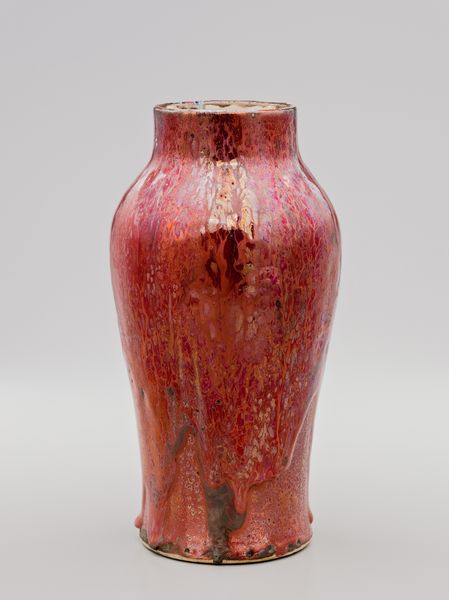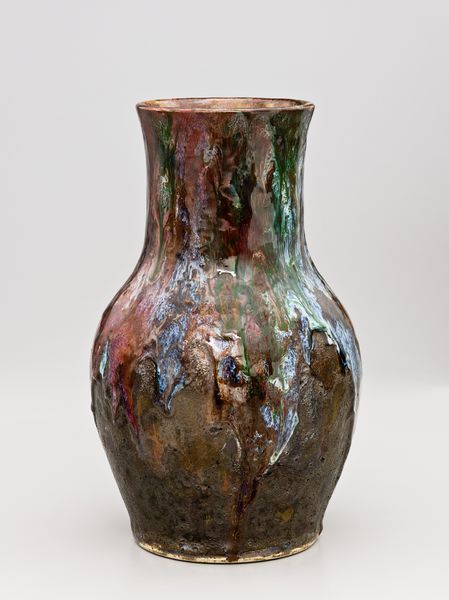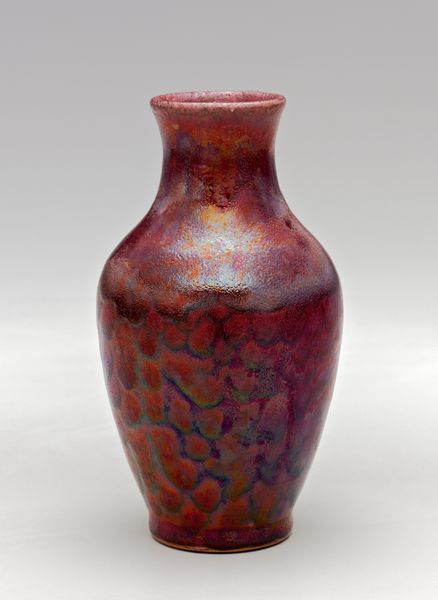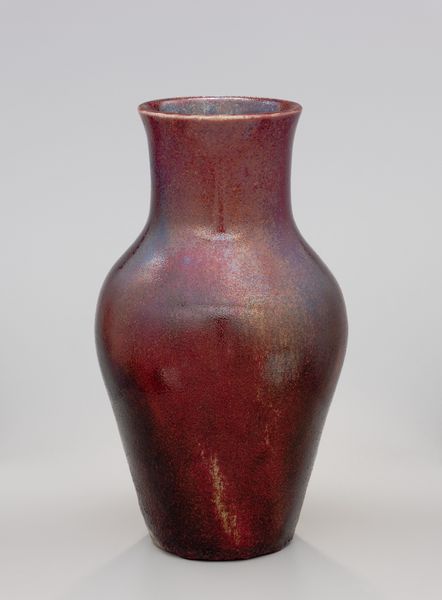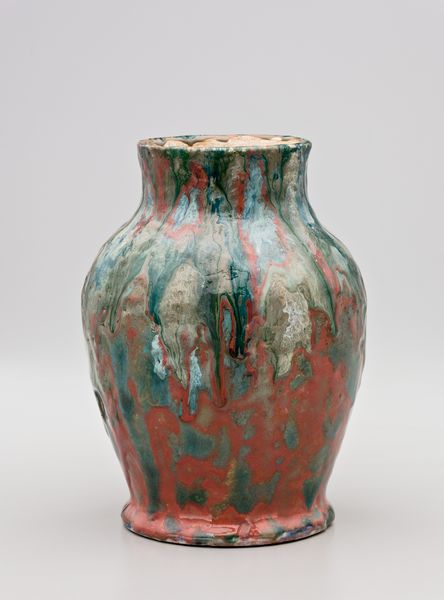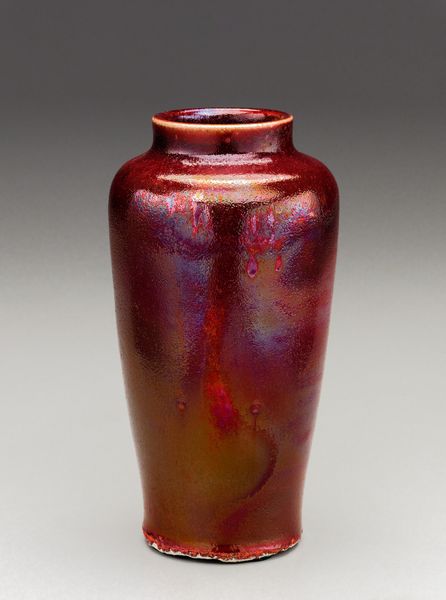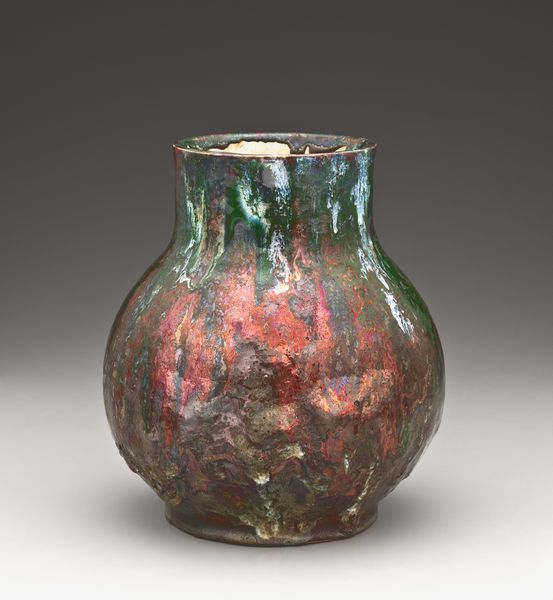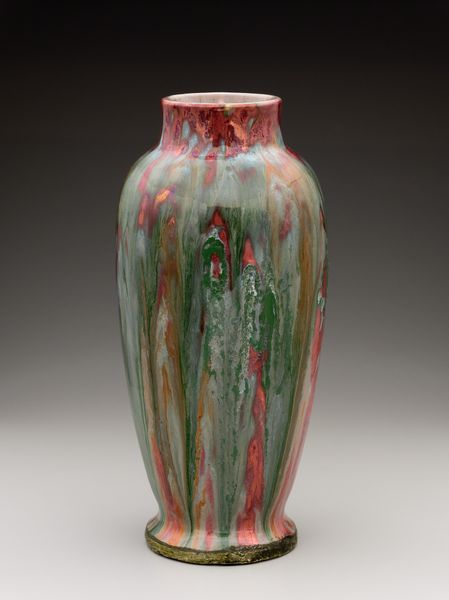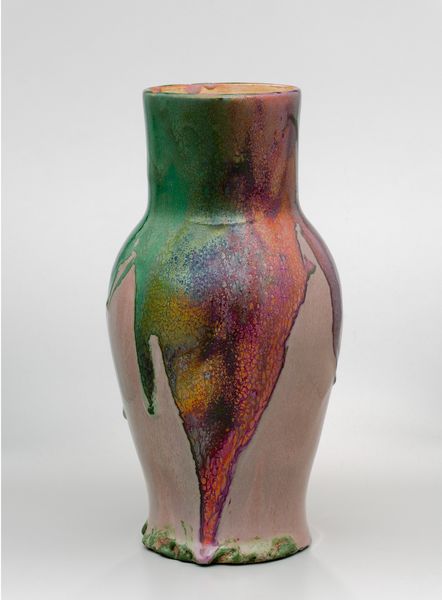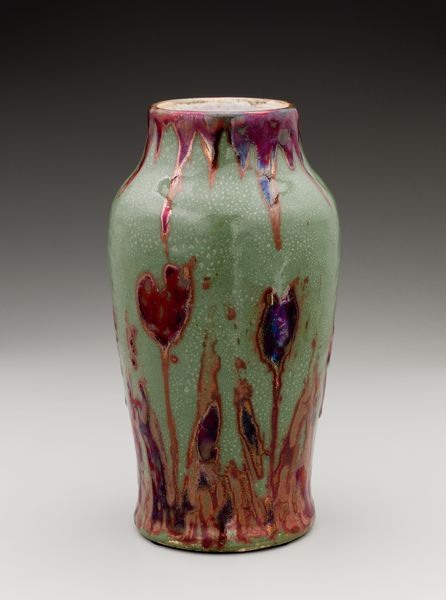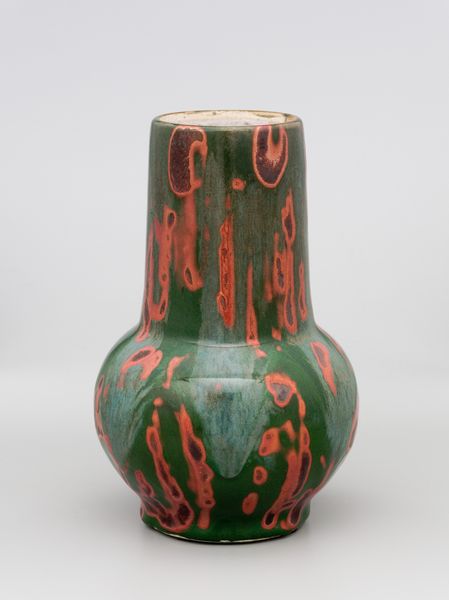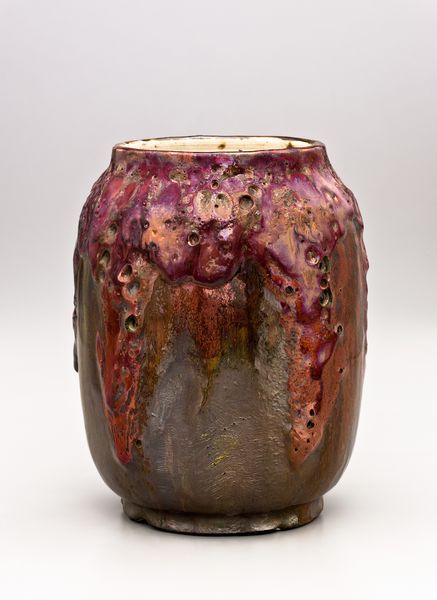
ceramic, earthenware
#
ceramic
#
earthenware
#
stoneware
#
ceramic
Dimensions: 7 1/2 in. (19.1 cm)
Copyright: Public Domain
Curator: It looks like it’s weeping, or maybe it's blushing… like someone caught in a moment of profound feeling. Editor: Quite. Allow me to present "Vase," a remarkable ceramic piece crafted by Chelsea Keramic Art Works, sometime between 1882 and 1892. You can find it here at the Metropolitan Museum of Art. It presents a rather compelling case study in late 19th-century material innovation, blending earthenware and stoneware. Curator: Innovation feels right. It has a volcanic, primal feel. You almost expect it to be warm to the touch. I’m drawn to that glossy glaze running down the sides… a constant flow or surrender to gravity. Is that intended? Editor: Indeed. This intentional glazing technique embodies a dynamic tension between form and chaos, order and accident. Note the variation in texture and the chromatics achieved through layering glazes of slightly varied hues. The subtle gradations invite phenomenological reading. Curator: Gradations, yes… It’s like capturing the life cycle of a fire. From the rich, deep reds reminiscent of ember to the cool blues of spent flames...There's this narrative of intensity followed by release, transformation. Editor: Precisely. The piece invokes transformation. The glaze serves as an allegory, signifying a move toward modernization while hinting at impermanence, that inherent in artistic practices of Chelsea Keramic Art Works. Curator: Makes me consider, is it a functional object transformed into an expressive one? I get the impression they really put their emotions into shaping something beautiful but slightly unruly, in contrast to the stiff porcelain work so popular during that period. Editor: I would agree. One can consider the implications of such pieces that subvert cultural understandings of value while interrogating class hierarchies through innovative material approaches, with particular relevance to decorative arts objects that had to adapt to changing economic and social norms in the nineteenth century. Curator: And thinking about it, the drips are frozen in time. An attempt to freeze a fleeting experience, perhaps. And with each view, and with time passing, new perspectives surface. Editor: Yes, and hopefully that adds a bit more fire to what you’ve experienced today!
Comments
No comments
Be the first to comment and join the conversation on the ultimate creative platform.
